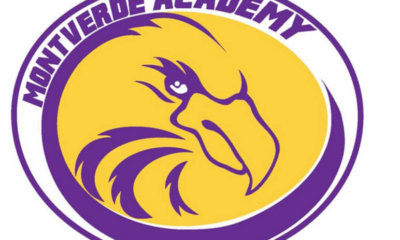
NEWPORT, R.I.– When Mike Aresco accepted the job as commissioner of the old Big East last fall, he knew he was stepping into a field of land mines.
The league was undergoing a series of damaging defections with Syracuse, Pitt, Notre Dame and Louisville leaving for the ACC, Rutgers bolting for the Big Ten and seven Catholic schools– St. John’s, Villanova, Georgetown, Seton Hall, Providence, Marquette and DePaul– suing for divorce so they could form a new basketball only conference.
Aresco successfully navigated his way through the wreckage to forge a new all sports league conference known as the American Athletic Conference that will consist of Louisville, Rutgers, Connecticut, Temple, Memphis, South Florida, Cincinnati, Central Florida, SMU, Houston, East Carolina, Tulane this season then add Tulsa and Navy to fill the void after Louisville and Rutgers move on.
At least, now that the ACC has convinced its member schools to sign off on a media rights deal and realignment looks like it is dead for the foreseeable future, Aresco should benefit from peace in our time to build the conference’s brand and credentials so the American can make a case for inclusion if the power five conferences– the SEC, Big Ten, Big 12, Pac-10 and ACC– go ahead with plans to form a Division 4 sub-division that would allow them to make their own set of rules and form a cartel that would further separate them from the rest of the Division I-A football playing schools.
“Whatever the highest level of Division One is in the future, we expect to be a part of it,” Aresco said at the AAC media day here.
Division 4– a proposed subdivision within the NCAA– is definitely a game changer. It would allow high resource conferences with the best TV deals to consolidate power and squeeze the rest of Division I football out of the picture by paying players a stipend that could be as high as $5,000 to $10,000 if they negotiate with video game makers and then give the money back to the players. Division 4 schools could change the recruiting rules to fit their needs and only play games against each other if they really wanted to eliminate the competition.
“If you do that it’s a zero-sum game,” Big 12 commissioner Bob Bowlsby said at the league’s annual media day in Dallas. “There are going to be winners and losers in there … If you have only those five conferences playing each other there’s going to be half those people who are traditional losers.”
“We’ve made it too easy to get into Division I and too easy to stay there,” Bowlsby said, later adding. “Northern Iowa and Texas aren’t much alike.”
This is the final year of the BCS before the birth of a national four team playoff and the last time the American will have automatic entree to one of college football’s lucrative bowl games.
The power conferences already control the upcoming playoff. The American, Mountain West, MAC, Conference USA and Sun Belt have one guaranteed bowl spot under the yearly six-game playoff umbrella of semifinal games and host bowls. The five power conferences will get roughly $90 million in annual playoff money while the other five will get about one-sixth of that.
Aresco is smart enough to understand the reality of the situation. He gets the fact that it will be an uphill battle. But he also knows to avoid antitrust complications; a new subdivision would likely need entry rules that appear fair, even if they are impractical for smaller schools. And he wants in, even at the cost of millions of additional dollars.
And he deserves a shot to see if he can make it happen.
As things stand, all five of the smaller conferences should get at least a million per school in college playoff money in 2014. Cincinnati athletic director Whit Babcock told CBSSports.com the league’s athletic directors and coaches met with the conference on Monday and member schools are prepared to do whatever is necessary. With a television deal of nearly $2 million per school, a pool of realignment exit fee money spread among each remaining member and a hefty settlement with the Catholic 7 basketball schools which paid for the name, the American feels there’s enough in the treasury to get it done, particularly if the league can eventually renegotiate its TV deal.
“If there’s momentum to have only five conferences, I have to deal with that,” Aresco said. “So I have to make the case for this conference. Many of our schools have had successful athletic programs and successful football programs for decades. We are currently a BCS conference. We have enormous respect for the other five BCS conferences. We look forward to working with them to competing with them. We feel strongly that we belong in the same conversation with them.”
Aresco feels the American has the overall depth to be included in any new sub-division.
“Louisville is a championship contender today, Aresco said, and adding teams like East Carolina, Tulane, Tulsa and Navy in the future will drastically increase the league’s geographic footprint. “There is significant football achievement in our collective past and enormous potential in our future, the reinvented league the American Athletic Conference,” he said. “We intend to be a major player on the national stage. We’re going to forge a new identity. We’ve already begun doing that in earnest.”
Aresco will take his case to commissioners. “You can call yourselves the Big Five,” Aresco said. “I said we want to eventually change that discussion to the Big Six. I’ve been fighting tooth and nail to make sure we are perceived a certain way, the way we are. … We have to perform, we know that.”
The American will have the next few years to show it belongs with on-field results against a number of high profile non-conference opponents it already has scheduled. The 10 biggest non-league games this year are Arkansas at Rutgers, Sept. 21; Purdue at Cincinnati, Aug. 31; Maryland at UConn, Sept. 14; Cincinnati at Illinois, Sept. 7; Rutgers at Fresno State, Sept. 7; Louisville at Kentucky, Sept. 14; SMU at TCU, Sept. 14; Miami at USF, Sept. 28; South Carolina at Central Florida, Sept. 28 and Michigan at UConn, Sept. 21. Central Florida opens against Notre Dame in Dublin in 2014.
“If our teams are successful playing such non-conference schedules, in addition to our very tough conference slate, we will be in a position to challenge for a spot in the national playoff or a spot in a New Year’s Day or Eve host Bowl as part of the college football group of six Bowls,” Aresco said. “Our only limitation will be our own performance. The opportunity is clearly there. We’ll be competitive. We’ll exceed expectations.”
College football, the second most watched sport on TV behind the NFL, is big business. Texas’ athletic budget is a $136 million. Ohio State spends $122.1 and four other Big Ten programs spend over $100 million. No one in the AAC comes close to matching those outrageous numbers. “If it was all about budget, with all due respect to those schools, then Texas and Ohio State would never lose a game,” Babcock said.
Dick Weiss is a sportswriter and columnist who has covered college football and college and professional basketball for the Philadelphia Daily News and the New York Daily News. He has received the Curt Gowdy Award from the Naismith Basketball Hall of Fame and is a member of the national Sportswriters Hall of Fame. He has also co-written several books with Rick Pitino, John Calipari, Dick Vitale and authored a tribute book on Duke coach Mike Krzyzewski.

Latest Articles
-


Christopher Lawlor
/ 18 hours agoU16 USA Women’s Basketball National Team roster selected for 2025 FIBA AmeriCup in Mexico from June 16-22
COLORADO SPRINGS, Colo. — USA Basketball announced today the 2025 USA Women’s U16 National...
-
Christopher Lawlor
/ 19 hours agoU16 USA Men’s Basketball National Team roster chosen for 2025 FIBA AmeriCup next week in Juarez, Mexico
COLORADO SPRINGS, Colo. – The team is set and now for the games South...
-
Christopher Lawlor
/ 5 days agoNO REGRETS: Chris McNesby steps away from Roman Catholic (PA) basketball gig after second tenure with his alma mater; Bradley Wanamaker takes over coveted post
BENSALEM, Pa. – Chris McNesby has lived many lives within the Philadelphia Catholic League....
-


Events
/ 6 days agoMORE CHANGE: Montverde Academy (FL) hires Anthony Jones from nearby Orlando as girls’ head basketball coach of national program
BENSALEM, Pa. – For the second time in three months, Montverde (Fla.) Academy made...








